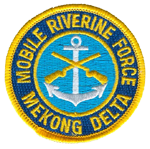

The Importance Of Technology And Its Application In Achieving A Secure Homeland
The current public and private discussion on the nature and composition of our Homeland Security effort has been rich and diverse in both topic and opinion. One area that seems to be missing from much of that discourse is how to achieve the potential of science and technology to greatly enhance many of our capabilities and to solve some of the problems we face. Many technologies are available, some are in various stages of development, and a few, perhaps an important few, are imagined but not yet in being. We need a national effort to bring new technologies to the fight and to apply the best we can get to help in solving some of our pressing homeland security challenges. This can be done with the direct deliberate participation of the best and brightest scientists and technologists we can muster, in some organized way.
The idea that we can divine the presence of some dangerous or otherwise inappropriate chemical, biological, nuclear or other signature is old hat. Accomplishing that idea is not. In some cases sensors do exist and they have been applied selectively to the problem. However there are many conditions that bear on successful collection of target signatures – time, proximity, strength of the signature, relevant reference data, and insulation and containment being among the most important and the most difficult to solve. Other problems exist when the target signatures are hard to capture and analyze – vapors and gasses that may disperse rapidly come to mind. It is even harder to accomplish this sensory magic if someone is deliberately trying to hide the signature or to conceal it through active deception or some other protective regime. This sounds technical. It is. But understanding it is mostly common sense.
Think of it this way. How many times have you encountered an odor or some other condition that you had little reason to anticipate – little warning of? It simply came to you or you came to it, probably due in part to being close to the source. When you moved away, at least with the sensory mechanisms that you naturally use, the odor was no longer there. The trick, in the context of threats to our security, is to sense the presence of that odor from as far away as possible, determine rapidly what it means, and act on the meaning quickly and appropriately. If you sense the presence of nuclear sourced gamma rays in a seaport where they do not belong, the right response to that information would be to bring the source of that emission under appropriate physical and scientific control and then render it safe as soon as possible. Sensing the signature is the necessary precursor to action. Action in advance of effect is what will save us.
Other technical challenges exist: Collecting technical intelligence, amalgamating and analyzing very high volumes of complex information, finding threats early and precisely, sensing change and activity from great distances, identifying truth and determining what is false, characterizing conditions, detecting threats in technical realms including cyberspace, finding the right people among the masses, acting in secret to gain advantage, and countering or dealing with the consequences of complicated events. There are more details and hard scientific and technical problems embedded in these phrases than can be explained in this article. Suffice to say that the basic need now is to assess the problems, select the right best technologies, and apply them appropriately to meet our needs. Easy to say – hard to do.
There are numerous other issues involved. We already know that technology can be both helpful and dangerous in its own right. Dangerous in many ways, one being that applied technologies may invade our lives and our society in ways that take away as much as they might protect. This and other concerns such as cost-benefit, practical utility, and cause and effect context, must be solved along the way toward finding the positive and constructive promise that technology embodies. This is hard. This is the subject of growing debate.
The technical problems included in threats from weapons of mass destruction are generally known, although not always understood, even in the scientific community. Now, in the “brave new world,” we are moving into, we can anticipate the relative simplicity of the past becoming much more complex. Proliferation alone is enough of a problem, but new ways to produce, present and apply weapons with mass effects are changing the possibilities in ways that demand new thinking and new technical approaches. Anthrax alone has provided a worrisome object lesson, proving to be difficult to deal with even in the very small amounts and limited conditions of the post-9/11 contamination. We know we might encounter more complex biological threats. We are likely to encounter more than one kind of technical weapon in some new way that we had not anticipated. That is a goal of opponents in War and a goal of terrorists.
In order to respond to these and other problems, and in order to determine which technologies and scientific methodologies will best meet our needs, we should embark now on a “Manhattan” style project. This effort should be broad and deep in expertise, in knowledge and in mission orientation, but should also be sufficiently attuned to the human conditions that pertain and to the legal, ethical and moral implications embodied in these problems.
The President should lead this effort, using the Department of Homeland Security as an organizational platform, but the remainder of the national security community, the national and departmental laboratories and other centers of scientific excellence, academia, industry and the inventors and individual scientists in all disciplines should participate. Such a combination of talent and motivation might produce many salutary benefits for our nation.
Without such an effort, our current science and technology structure will continue to produce many ideas and many options. We need this innovation and imagination and we need this science. But we also need a few right and best choices, made and applied, in time to help to forestall the potential disasters of the future. It’s time to focus.
Reprinted with permission of the author Patrick M. Hughes, LTG, U.S.Army (Ret.)
